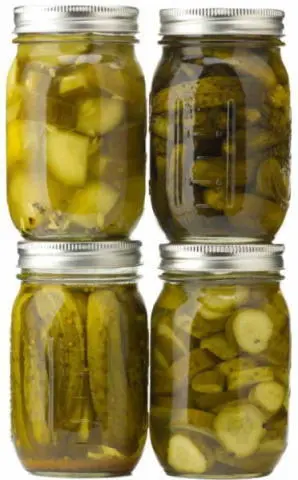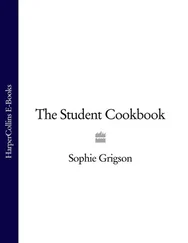3. Heat the sugar and water in a saucepan over medium-high heat until the sugar is completely dissolved.
4. Pour about ½ cup of liquid into each jar. Pack the produce gently into the jar about halfway up. Then gently tap the bottom of the glass on a pot holder or towel on your counter. This helps settle the produce and release bubbles without having to smash delicate berries or fruits into the jar.
5. Fill the jars until full, tapping when necessary to pack tightly. No matter how tightly they seem to be packed, as soon as you add the liquid, space is going to appear.
6. Cover with liquid until ½ inch of headspace is left.
7. Remove air bubbles, wipe rims, center the lids, and screw on the bands and adjust until they are fingertip tight.
8. Process in the canner for 10 minutes (or for the time each recipe states), adjusting for altitude.
9. Remove the jars and set upright on a towel. Do not disturb jars for at least 24 hours.
• 9 pounds of peaches (3 pounds per quart)
• 4 cups water
• 2 cups granulated sugar
• 3 quart jars, lids, and bands
1. Fill the canner with enough water to cover the jars. Boil the water, reduce the heat to low, place the jars in the water, and simmer until ready to use. Prepare lids and bands by simmering them over low heat in a small saucepan.
2. Fill a large pot with water and bring to a boil. Add the peaches to the boiling water and boil for 30 seconds. Plunge into a large bowl of icy cold water to loosen the skins. Slip off the skins, then cut the peaches in half and remove the pits.
3. Pack the peaches into the jars, leaving ½ inch of headspace.
4. In a saucepan, mix the water and sugar and bring to a boil, stirring to dissolve the sugar. Pour enough syrup over the peaches to cover, leaving ½ inch of headspace.
5. Remove air bubbles, wipe rims, center the lids, and screw on the bands and adjust until they are fingertip tight.
6. Place the jars in the canner and bring to a boil. Make sure there is at least 1 inch of water covering the jars.
7. Process for 25–30 minutes, adjusting for altitude. Remove the jars from the canner and cool.
• 6–7 quarts apples, peeled, cored, and quartered
• 4½ cups granulated sugar
• 1 cup cornstarch
• 3 teaspoons ground cinnamon
• ¼ teaspoon ground nutmeg
• ¼ teaspoon ground ginger
• 1 teaspoon salt
• 10 cups water
• 5 tablespoons fresh or bottled lemon juice, divided
• 6–7 quart jars, lids, and bands
1. Fill the canner with enough water to cover the jars. Boil the water, reduce the heat to low, place the jars in the water, and simmer until ready to use. Prepare lids and bands by simmering them over low heat in a small saucepan.
2. To keep the apples from turning brown, place them in a large bowl with cold water and 2 tablespoons lemon juice.
3. Mix the dry ingredients together in a large pot. Add the water and cook the mixture until thick. Add the remaining lemon juice.
4. Pack the apples into the jars, and pour the cooked filling over the apples, leaving ½ inch of headspace.
5. Remove air bubbles, wipe rims, center the lids, and screw on the bands and adjust until they are fingertip tight.
6. Place the jars in the canner and bring to a boil. Make sure there is at least 1 inch of water covering the jars.
7. Process for 20 minutes, adjusting for altitude. Remove the jars from the canner and cool.
• 4 cups granulated sugar
• 2 cups water
• 8 cups fresh blueberries
• 1/3 cup fresh or bottled lemon juice
• 3 pint jars, lids, and bands
1. Fill the canner with enough water to cover the jars. Boil the water, reduce the heat to low, place the jars in the water, and simmer until ready to use. Prepare lids and bands by simmering them over low heat in a small saucepan.
2. Combine the sugar and water in a saucepan, and boil for 5 minutes. Add the blueberries, and simmer for another 4 to 5 minutes or until the blueberries start to break down and burst open.
3. Remove from the heat and stir in the lemon juice.
4. Fill the jars with the blueberry mixture, leaving ¼ to ½ inch of headspace.
5. Remove air bubbles, wipe rims, center the lids, and screw on the bands and adjust until they are fingertip tight.
6. Place the jars in the canner and bring to a boil. Make sure there is at least 1 inch of water covering the jars.
7. Process for 10 minutes, adjusting for altitude. Remove the jars from the canner and cool.

8
PICKLING
Pickling is a great way to preserve fruits and vegetables, and although you usually think of cucumbers, you can pickle just about anything! Pickled eggs, pickled watermelon rind, and pickled jalapeños are just a few examples of noncucumber produce that is canned regularly.
Although all forms of pickling involve the use of some type of acid (typically vinegar) to increase the pH (thus making it Clostridium botulinum –resistant), there are four different methods that you can use.
Brining
Likely the most traditional form of pickling, brining has been used for centuries to make cucumber pickles, sauerkraut, and other foods. In this process, the produce is fermented in salt and water for at least a week, and sometimes for months. The process makes the produce tender yet firm, and the salt used in brining acts as a preservative. Brining can be done with any type of container, but it needs to be stored in a cool, dry place while the process occurs.
Fresh-Pack Pickling
Also called quick-process pickling, this process involves short-term brining for just a few hours or possibly overnight. The brining is actually more of a process to help preserve and maintain the structure and texture of the produce. After the brining, the produce is stuffed into jars and the hot pickling liquid is poured over them prior to processing.
Relishes
Relishes are fruits or vegetables that are chopped up and cooked in a vinegar pickling solution. Common relishes are sweet or dill pickle relish, mango relish, and pepper relishes.
Fruit Pickles
It may sound odd, but fruit pickles are actually quite delicious. They’re made from whole or sliced fruits and even rinds that are combined with a sweet and spicy syrup that has lemon juice or vinegar. You can also use some of your favorite spices if you’d like, as well.
Classic Dill Pickle Spears
• 11 cups water
• 5 cups white vinegar
• 1 cup pickling salt
• 12 pounds pickling cucumbers, cut into spears
• 9 fresh dill sprigs or heads
• 18 whole cloves garlic
• 18 dried hot chilies
• 9 quart jars, lids, and bands
1. Fill the canner with enough water to cover the jars. Boil the water, reduce the heat to low, place the jars in the water, and simmer until ready to use. Prepare lids and bands by simmering them over low heat in a small saucepan.
2. In a large pot, bring the water, vinegar, and salt to a boil. Boil for 10 minutes.
3. Place the cucumbers into the jars, leaving ½ inch of headspace.
4. Add 1 dill head or sprig, two garlic cloves, and two chilies into each jar.
5. Carefully ladle the hot mixture into the jars, leaving ½ inch of headspace.
6. Remove air bubbles, wipe rims, center the lids, and screw on the bands and adjust until they are fingertip tight.
Читать дальше













